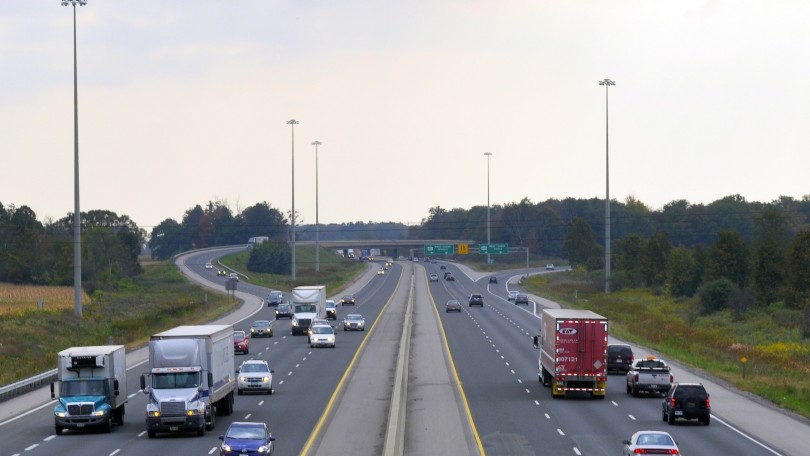Innovation NewsBriefs–California’s Bullet Train Hobbled by Fresh Legal, Fiscal and Political Uncertainties
Barely recovered from the damaging effects of the Sacramento Court ruling denying the California High Speed Rail Authority access to Prop 1A bond funding, the bullet train project has had to face fresh challenges.
First came the news that Congress has zeroed out any funds for high speed rail in the FY 2014 omnibus appropriation bill, the fourth straight year no new monies have been provided. This put to rest any lingering hopes of a future resumption of congressional funding for the California bullet train. But it has not deterred the California High Speed Rail Authority from officially still expressing a hope for federal subsidies. “We believe that it is reasonable for the federal government to continue investing in intercity and high speed passenger rail systems, like California,” Authority Chairman Dan Richard stated in his recent congressional testimony.
Next came a House Subcommittee on Railroads hearing on “The Challenges Facing California High Speed Rail.” Committee chairman Rep. Jeff Denham (R-CA) wanted some “straightforward answers to straightforward questions” as he put it in his opening statement. Specifically, how was the Authority going to match the $2.25 billion the Federal Government has provided to the project, now that the court has foreclosed the possibility of using Proposition 1A bond funds? And where would the remaining funds to complete the entire 300-mile Initial Operating Segment (IOS) come from?
Cap-and-Trade Funds as State Matching Contribution
Authority Chairman Dan Richard had some straightforward though not necessarily satisfying (to Rep. Denham) answers. Governor Brown, Richard said, has sent a letter to FRA reaffirming the State’s commitment to honor California’s obligation to match the federal spending. The matching money would come from the cap-and-trade pollution trading funds.
Richard confessed he could not predict whether the state legislature would approve the use of cap-and-trade funds for the project. Even if those funds were to be approved, they would not become available by the April 1 deadline when the state must start matching the federal grant. The Chairman did not elaborate how the Authority would handle its obligation, come April 1.(However, in the Governor’s proposed new budget there is a provision to advance $29 million to keep the project moving. The loan, which would come from the state transportation account, could presumably be used as a first down payment in the required matching funds).
Nor did Chairman Richard mention the strong opposition by environmental groups, notably the Sierra Club. “The problem with taking that money and applying it to high-speed rail,” said Kathryn Phillips, head of California’s Sierra Club, “is that we don’t anticipate that we’re going to get the benefits of reductions in greenhouse gas emissions in the short term. … It is irresponsible to not apply that money to those programs that will get you greenhouse gas emission reductions now.” Other critics alleged that the HSR project does not meet the legal test that it would result in reductions of greenhouse gas emission that are “real, quantifiable, verifiable and enforceable” as the law requires. Editorial opinion of some California newspapers (San Jose Mercury News, U-T San Diego) echoed these criticisms.Even the LA Times, a steadfast supporter of the project, expressed some doubts (“Yet the delays, the rising cost, the judge’s ruling and the waning public support should give pause to even the strongest advocates. Can the rail authority line up a financing plan? Is the project still viable? We hope the answer is yes. But the state shouldn’t spend a dime of cap-and-trade money on it until we know for sure.”)
A Re-defined “Usable Segment”
Chairman Richard did not address the court ruling requiring the Authority to identify sources of funds and show completed environmental clearances for the entire 300-mile Initial Operating Segment extending from Merced to San Fernando Valley. Instead, Richard testified that the Authority’s revised funding plan will consider the 130-mile construction section from Merced to north of Bakersfield to be the new “usable segment.” By connecting to existing Amtrak service at Bakersfield, the Chairman said, this stretch will have operational utility, hence it will qualify as a “usable segment” within the meaning of Proposition 1A. The judicial rulings pertaining to the longer 300-mile stretch from Merced to San Fernando Valley are thus no longer relevant in his opinion.
But longtime critic, attorney Michael Brady does not see this as a meaningful solution. The re-defined Merced-to-Bakersfield usable segment will be conventional rail only, he told us, whereas Proposition 1A requires that a “usable segment” be electrified, with all the attributes of a genuine high speed rail system. Moreover, Proposition 1A says a usable segment must operate without an operating subsidy and must have adequate ridership. The Authority’s redefined usable segment will flunk both tests, Brady said. “Hooking it up to an existing Amtrak line will not get them out of these requirements.”
Long-Term Funding
As for long-term funding, a precise funding plan for the entire system is not possible, Richard testified. However, the Governor’s budget proposal “establishes an ongoing state commitment of cap-and-trade proceeds to the project.” The measure includes an initial $58 million for planning and $191 million for construction and right-of-way acquisition in the first phase of the project. Once the line to San Fernando Valley (Palmdale) has been completed and operational, the opportunity for private investment will be ” greatly increased” according to Richard.
“This is an internationally proven investment model and is common to almost all recent high speed rail projects in the world, where capital investment begins with the public sector and then becomes shared with the private sector” to pay for further expansion, Richard testified. As an example, he cited high speed rail systems in France, Spain and The Netherlands which, he said, attracted private investment once ridership was established. However, the parallel is not quite correct. True, European high speed rail systems were able to attract private sector interest after EU opened up cross-border rail passenger services to competition in 2009 . But the public-private partnerships took the form of running private high speed rail services (such as Thello, Westbahn and NTV) on publicly-owned rail infrastructure—they did not involve private capital contributions to expand the physical facilities of the high speed rail networks.
Despite Chairman Richard’s reassuring statements, the prospect for future private investment in the California HSR project still remains very much an open question.
Federal Railroad Administration Position
At the hearing, the Federal Railroad Administration and its Deputy Administrator, Karen Hedlund also came in for some sharp questioning. Why has the agency not suspended reimbursements until the High Speed Rail Authority presents a viable plan to identify a new source of the required state match, Chairman Denham wanted to know. Given so much uncertainty around the project, why wouldn’t FRA take the prudent step to hold off spending more taxpayer dollars until they are satisfied that California has remedied these legal setbacks?
Hedlund chose not to respond directly to the Chairman’s questions. Instead, she stated that “at this time,” the Authority was not in violation of the grant agreement. However, she conceded that should California fail to match the federal grants as required by the funding agreement (i.e. beginning April 1), the government could collect the owed matching funds by withholding other federal grants. Rep. Denham followed this up by introducing a bill, with the support of every member of the state’s Republican delegation, to suspend federal spending on high speed rail “until sufficient non-federal funds are available.”
The Governor’s Surprising Move
On January 24, in an unusual move, Gov. Jerry Brown’s administration petitioned the California Supreme Court directly to overturn the Superior Court ruling that barred the State from selling the Proposition 1A approved bonds The state’s request to skip the appellate court review is considered as unprecedented. “In my 47 years of appellate practice, I have never seen something like this,” said Michael Brady, one of the attorneys for the Central Valley landowners who sued the Rail Authority. The State in its brief argued that the normal appeal process could take years to resolve and the delay would cause “irreparable injury absent immediate intervention by this Court.” The brief is asking the High Court for an answer by March 1.
As reported above, the Authority is facing an April 1 deadline to begin matching the federal grant with state funds. There are speculations that, threatened with a cut-off of federal funds in the event of non-compliance with the deadline and having concluded that using cap-and-trade funds might be politically risky given the strong environmentalist opposition, the Brown administration concluded that it had no alternative but to take this drastic step in an effort to gain access to the bond funds.
The Authority’s move has caught observers by surprise. Just ten days earlier Chairman Richard gave the impression that the Authority would comply with the judge’s ruling and re-do the funding plan. “My view is that we go back and do exactly what the Judge has said,” Richard testified before the House Railroads Subcommittee. .
Back in December, we wrote that further delays in the project’s groundbreaking (already more than a year behind schedule), the prospect of multiple challenges over bond validation, a likelihood of drawn out negotiations over right-of-way acquisition and expropriation and, most importantly, the Authority’s inability to identify credible sources of non-federal money to complete the entire 300-mile line to the San Fernando Valley, “all add up to a very problematic future for this transformative project.” The events and disclosures over the past month have done nothing to lessen this impression.
Kenneth Orski
Editor/Publisher
Innovation NewsBriefs (celebrating our 25th year of publication)
— Posted on January 30, 2014 at 3:16 pm by Ann

